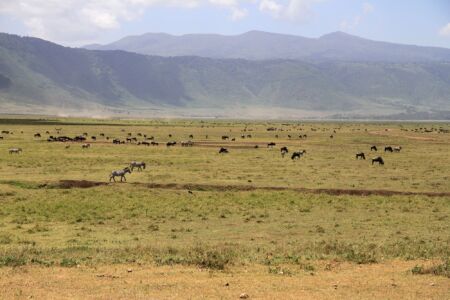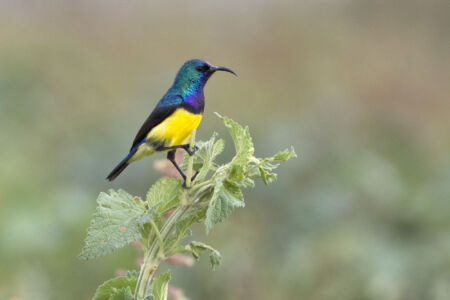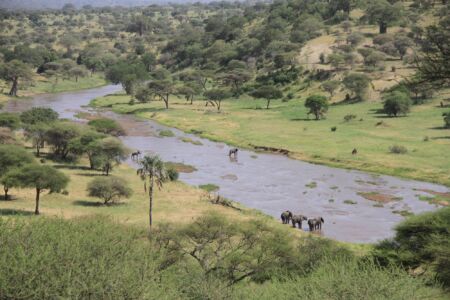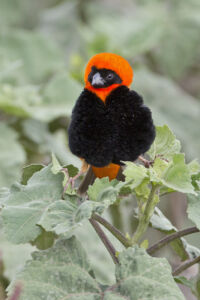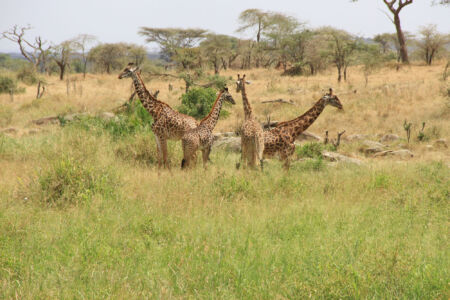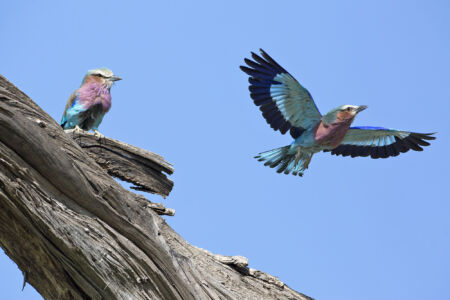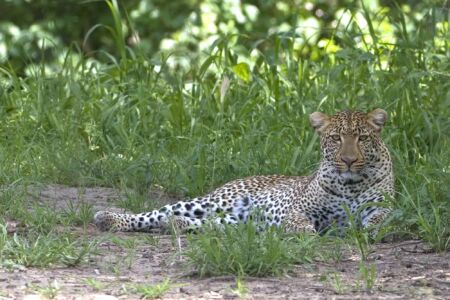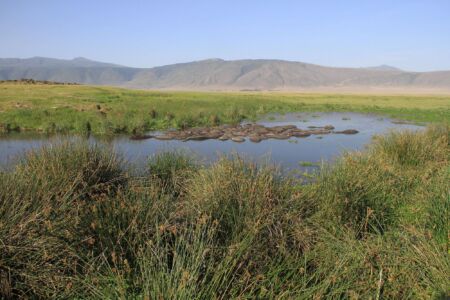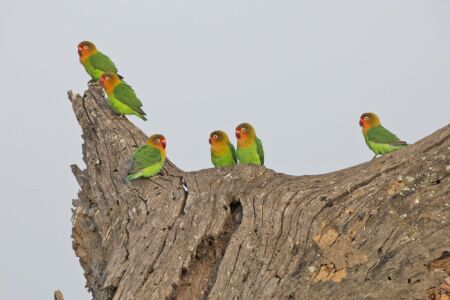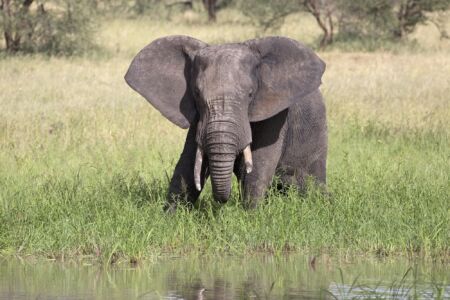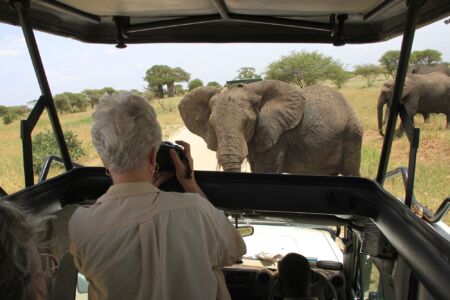TANZANIA 2025-02: Wildlife Safari

TOUR FOCUS
BIRDS & WILDLIFE
SCHEDULED TOURS
TRIP LEADERS
TOUR COST
From: $12,300 (See details)
Cost is per person, double occupancy from Nairobi, Kenya (NBO)
GROUP SIZE
4-6 Participants
AVAILABILITY
2025 – FULL
2026 – dates and cost tbd. – 4 spaces remain
PRIVATE TOUR OPTION
This tour is available as a private trip for any size group. The tour cost will vary with the number of people and any custom requests.
TESTIMONIALS
Highlights of TANZANIA 2025-02: Wildlife Safari
Description of TANZANIA 2025-02: Wildlife Safari
Tanzania is not only home to the ‘cradle of mankind’ it is also here that the word ‘safari’ originated, coming from the Swahili word for journey. Game viewing experiences are widely regarded as among the best in Africa.
Our glorious safari visits world-renowned national parks and reserves beginning in Kenya at Amboseli with Mount Kilimanjaro as a backdrop. From here we cross the border into Tanzania to explore Arusha, Tarangire, the Serengeti plains, along with one of the great wonders of the world ‘Africa’s Garden of Eden’ the Ngorongoro Crater, where the largest concentration of predatory mammals exists.
The Serengeti is the place to see seemingly endless herds of migrating wildebeest, zebra and gazelles trekking across the plains – followed by the predatory lions, leopards, cheetah and hyena. This is also elephant country, boasting some of the world’s largest populations. Giraffes may peer into our open roofed vehicles while Buffalos are quite content to stare us down. Rhinoceros round out the Big 5 and “the crater” is one of its last strongholds. Comical Warthogs always seem to be on the move with their tails raised and troops of baboons with newborn babies hitching a ride on their mothers backs forage through the savanna. A night game drive may produce porcupine, civet, genet, springhare and galagos. Overall an extraordinary number of mammals will be experienced, some very close!
We’ll encounter myriads of birds, including colorful bee-eaters, kingfishers, sunbirds and rollers, noisy hornbills, Secretarybirds, Grey Crowned Cranes, ostriches, a wide assortment of bustards, raptors and vultures as well as Tanzanian endemics such as Yellow-collared Lovebird, Ashy Starling, Rufous-tailed Weaver and Beesley’s Lark. A visit to Olduvai Gorge the site of our earliest known ancestors and a Maasai Village will round out our wonderful experience.
As with all safaris, the itinerary can be altered and customized to suit your needs and goals, whether it would be more birding or mammals or length of trip.
This extraordinary trip encompassing endless savannas, acacia thickets, montane, salt lakes and riverine habitats is likely to produce about 300 species of birds, an astonishing 50 mammals and a nice assortment of reptiles and butterflies.
This trip can be combined with an extension to the Kenyan Coast, or, to see the Gorillas in Uganda or Rwanda.
Focus: Birds, Mammals, Photography, Reptiles, Butterflies, Culture, Landscapes
Watch our webinars on – Tanzania’s Ngorongoro Crater, The Great Wildebeest Migration, Unique and Amazing Adaptations of Birds on Safari, and
Read blog about Savanna Scavengers
“What can I say? It was a trip of a lifetime. Even now, three weeks later, I have scenes of Africa in my night dreams and day dreams.”
– Edie P.
Length of Tour
16-days/15-nights
Brief Itinerary
Day 1 – Arrive in Nairobi
Days 2 & 3 – Amboseli NP
Days 4 & 5 – Arusha NP
Days 6, 7 & 8 – Tarangire NP
Days 9 & 10 – Ngorongoro CA
Days 11 through 15 – Serengeti NP
Day 16 – Return flight to Nairobi; or continue onto Tsavo West for Coastal Kenya extension
- Note: The itinerary can change depending upon availablity of accomodations.
Detailed Itinerary
Day 1 – Arrive in Nairobi
Arrival to Nairobi Jomo Kenyatta international Airport (AM direct from JFK; or PM via European city) and transfer to our hotel in Nairobi.
Days 2 & 3 – Amboseli National Park
After breakfast we depart Nairobi driving through the Athi-Kapiti plains to Amboseli National Park arriving in time for a late lunch. The grounds of our lodge can be excellent for birds and well have 3 game drives to explore the plains and Amboseli swamps in search of dry country and waterbirds. Overnight: Ol Tukai Lodge, Amboseli.
Amboseli is the second most popular park in Kenya after Maasai Mara, mainly because of the spectacular backdrop of Africa’s highest peak, Mt. Kilimanjaro, which broods over the southern boundary of the park. Amboseli is under Kenya gazette a biosphere park with research on African Elephants being carried out in the park by a British Biologist Cynthia Moss. Due to salinity and damage by elephants leading to terrible erosion, the landscape provides limited vegetation cover for wildlife, so we have a good chance of seeing some of the larger predators. Buffaloes, lions, cheetahs, Wildebeests, Hyenas, Jackals, Warthogs, Zebras, Maasai Giraffes and Baboons are among a wealth of animals to be seen here. Birdlife is prolific with over 350 species recorded and we’ll look for Taveta Golden Weaver, Ashy Cisticola, Two-banded Courser, Rosy-patched Bush-shrike, Taita Shrike, Thrush Nightingale, Pale Prinia, Athi Short-toed Lark, White-headed Mousebird, Kittlitz’s Plover, Chestnut-banded Plover Long-toed Lapwing (Plover) and Malachite Kingfisher. There are two permanent swamps Ekongo Narok and Ol-Kenya that host big herds of grazing and wallowing animals and numerous waders; needless to say that it’s probably the best place for the classic Kenya wildlife photo, “elephants in front of Mt. Kilimanjaro”.
Days 4 & 5 – Tanzania – Arusha National Park
This morning after breakfast we will transfer to the Namanga border. Following immigration procedures we proceed to “Lark Plains”. The Common larks found here are Red-capped, Short-tailed and Athi Short-toed Larks as well as Fischer’s Sparrow-larks, but the prize is the rare endemic Beesley’s Lark. In addition to the larks, we have good chances of Chestnut-bellied and Yellow-throated Sandgrouse. Our lodge for the next 2 night is the Serena Mountain Village in Arusha. The grounds can be good for weavers, barbets, sunbirds and with luck we’ll find the resident African Wood Owls. Arusha National Park is a short drive away on the outskirts of town.
Arusha National Park lying between the peaks of Mt. Kilimanjaro and Mt. Meru is an outstandingly beautiful area. The park has a wide range of habitats, from the string of crater lakes where many water birds can be watched, through the highland montane forest. The forests contain a wealth of birds and animals such as the bushbuck easily glimpsed in the glades between the ancient cedar trees, or the Black-and-white Colobus monkeys climbing along the branches. The interesting geology of the area is reflected in the impressive view of the ash cone and cliff face to the summit of Mt. Meru. Key species here include: Narina Trogon, Maccoa Duck, Brown-hooded Kingfisher, Lesser and Greater Flamingoes, African Crowned Eagle, Long-crested Eagle, Mountain Buzzard, White-fronted Bee-eater, African Grey Hornbill, Crowned Hornbill, Silvery-cheeked Hornbill and Hartlaub’s Turaco.
Days 6, 7 & 8 – Tarangire National Park
After breakfast we shall drive to Tarangire National Park, arriving at Tarangire Safari Lodge in time for lunch. Though called a lodge, it is a Tented Camp, with a wonderful panoramic view of the baobab dominated landscape and river. Early afternoon will be spent at leisure (sometimes it gets reasonably hot here) and new birds around the grounds and raptors circling overhead will keep us busy, as will our game drives!
Tarangire National Park, known for its tree-climbing pythons, though don’t count on them, is about a 2 hour drive south west of Arusha. It covers approximately 2600 square kilometers and lies at the southern edge of a large open grassland plain, interspersed by huge baobab and acacia trees. Tarangire National Park gets its name from the river Tarangire that threads its way through the length of the reserve. However, legend says that it gets its name from the local name of Warthogs-(Ngiri); the park has a considerably huge number of warthogs. Tarangire is home to a number of dry country birds including Tanzanian endemics such as the Ashy Starling, Yellow-collared Lovebird and Rufous-tailed Weaver. Other specialties include Coqui Francolin, White-headed Vulture, Brown and Black-chested Snake Eagle, African Harrier-hawk, Hildebrandt’s Francolin, Violet-tipped Courser. The River at Tarangire will also reward us with Hamerkop, Water Thick-knee a number of waders including snipe, Marsh, Common and Green Sandpipers among others. It is its huge concentration of Elephants, Impalas, Grants Gazelles, Giraffes, Reedbucks, Wildebeest, Hyenas and Buffalo that make this place one of the best wildlife areas of East Africa.
Days 9 & 10 – Ngorongoro Crater
After our breakfast we depart for Ngorongoro Conservation Area (NCA) stopping at Gibbs Farm for lunch and to bird the grounds for Grosbeak Weaver, Western Citril and African Paradise Flycatcher. It is only a short drive to Ngorongoro Crater rim where the panoramic view across the crater is simply stunning. The montane grasslands and woodland edges around the Ngorongoro Serena Lodge hold Tacazze, Golden-winged and Malachite Sunbird, Hunter’s Cisticola, Schalow’s Turaco and Dusky Turtle Dove. We will have a full day to explore the crater floor.
Ngorongoro Crater is surely one of the great “natural wonders of the world”. The Crater rises up through lichen-bearded forests to an altitude of 7000 feet above sea level. Nearly three million years old the ancient caldera of the once – volcanic Ngorongoro shelters one of the most beautiful wildlife havens in the world. Here some of Africa’s last Black Rhinos are still well protected and it holds the largest concentration of predators, lead by Spotted Hyenas and black-maned Lions that stalk the grasslands for zebras, wildebeest and gazelles. Flamingos crowd the Magadi Lake and the giant-tusked Elephants are mostly seen along the permanent swamps. Towering euphorbias cling to the crater walls and on the floor, fever and fig tree forests provide shade for an awe-inspiring array of wildlife as Maasai, resplendent in blends and furled in scarlet kanga robes, can be seen tending to their herds. Birdlife is prolific here, mostly with waterbirds and grasslands species such as pipits, longclaws, wheatears, and it is probably one of the best places to see Kori Bustard and Abdim’s Stork.
Days 11 through 15 – Olduvai Gorge – Serengeti National Park
After an early breakfast, we head to the Serengeti National Park with boxed lunches. We make an enroute visit to Olduvai Gorge, where the Leakey’s unearthed thousands of fossil bones and stone tools, unraveling much of mankind’s past. By the afternoon we will be driving through the savanna in the Serengeti on a game drive, sure to spot Topi and Coke’s Hartebeest surveying the grasslands from termite mounds, maybe even a Cheetah. We spend two nights at the Serengeti Serena in the heart of the park followed by two nights in a tented camp in the Ndutu area, at the southern end of the park, and hopefully somewhere in this vast area we’ll witness the wildebeest migration.
We have three full days to explore this expansive and game studded park with its mosaic of hills, valleys, forests, rivers and plains. We’ll visit Lake Masek for flamingo’s, ducks and shorebirds; rock outcroppings known as kopjes that make favorite resting places and lookouts for cats; a wonderful hippo pool; the riverine haunts of Elephants, Bohor Reedbuck and Defassa Waterbuck in search of Leopard. We also include a visit to the southern area around Ndutu which is absolutely wonderful for birds and is well located in a wildlife rich area.
Serengeti National Park shares the same ecosystem with Kenya’s Maasai Mara. The ecosystem boasts the greatest wildlife concentrations of ungulates; more than one million wildebeest and nearly half a million zebra annually follow the rains from the plains to savannah to woodlands. It has been described, as the greatest wildlife spectacle on earth. Just like in the Mara, Lions, Cheetahs, Jackals, Hyenas, and probably Leopards are reasonably common. Antelopes include Topi, Hartebeest, Dik-dik, Eland, Steinbok, and Grants and Thompson’s Gazelles among other small creatures.
The Serengeti is not only famous for the big game roaming over the plains, but also with its great ornithological spectacle. The highlight includes; the endemic Grey-breasted Spurfowl and Fischer’s Lovebirds, Silverbird, Magpie Shrike, Winding, Desert and Rattling Cisticolas, Ashy Starlings, Rufous-tailed Weaver and Tanzanian Red-billed Hornbill.
Days 14 & 15 – Lake Manyara National Park
and heading back the same way we came in, through the Ngorongoro Conservation Area. This is the only road! A visit to a Maasai village, set in the heart of a pastoral area, will give us insight to the local customs of these tribal communities of Southern Kenya and Northern Tanzania.
Day 16 – Cross the border into Kenya – Tsavo West National Park
This morning we have a final look around the Lake Ndutu area before leaving the Serengeti from the Ndutu airstrip by plane! We change planes in Arusha, and arrive in Nairobi mid afternoon. Following dinner we transfer to the airport for our late evening flight home.
Cost
$12,300 per person, based upon double occupancy, from Nairobi, Kenya (Airport code NBO).
This trip ends in Nairobi, Kenya (Airport code NBO).
Single Supplement and other Cost Additions
If a single room is preferred, or we are unable to find a suitable roommate for you, a single supplement fee of $1,625 will be assessed.
Additional Costs
International flight to Nairobi; visa fees for both Kenya ($50) and Tanzania ($100); travel insurance; tips to porters, drivers and guides; items of a personal nature and beverages; any other services not mentioned or indicated as optional.
Note: There may be an additional surcharge should Park and or Conservation fees increase, which often happens with very little notice.
Deposit Requirements
A $2,000 deposit per person is required to hold each space on this tour. Deposit may be made online by clicking the "Book Your Trip Now" button and using any credit card. If you prefer, you may call us at 888-875-9453 to pay by phone. You may also mail us a check, however, remember that all space is held on a first come-first served basis as deposits are received.
How to Book
In order to hold your space, click the "Book Your Trip Now" button above and complete the deposit process, including payment of the deposit through our Paypal portal using ANY CREDIT CARD. Upon completion of deposit, please visit our secure, online CLIENT INFORMATION FORM to complete your registration.
Final Payment
For all land-based tours: full payment by check is due 120 days prior to the departure date.
For all boat-based adventure cruises of 7-days or longer: full payment by check is required 180 days prior to departure.
NOTE: If you prefer to use credit card for final payment, a 3% fee may be added to cover the credit card merchant fees we incur.
Most of our lodges are good to very good with en-suite facilities. 3 nights in Tarangire NP will be in a tented camp (even though it is called a lodge); and 2 nights at Ndutu Serengeti will be in a tented camp.
Activity Level Rating: 2 (Note: 1 is easy and 5 is difficult)
 Recommended Field Guide:
Recommended Field Guide:
Birds of East Africa
(Princeton Field Guides, 2020)
by Terry Stevenson and John Fanshawe
Non-smoking tour
This trip is for non-smokers only. Smoking is not permitted at any time during our safari.
Trip Insurance
Trip Insurance is highly recommended for all safaris
Visa
You will need to get a Visa to enter Kenya & Tanzania. For Kenya, the current cost is $50 and this can be applied for / purchased upon arrival at the airport in Nairobi, Kenya. For Tanzania, the current cost is $100, and we can apply /purchase our Tanzanian Visa at the border crossing.
Covid-19 Protocols
Please read our latest information and requirements in regards to Covid.
Currently you are required to show proof of a negative PCR test 72 hours prior to travel, and are required to do the same prior to returning to the US. We will arrange to have this done at a convenient place before the end of the trip.
Malaria
Malaria is present throughout the country. Check with your doctor for the recommended prophylaxis.
Transportation
Transportation: 4×4 mini buses, land rovers or land cruisers with pop-top roof excellent for wildlife viewing. Everyone will have a window seat. Maximum of 6 participants per vehicle.
This trip can be combined with Coastal Kenya
Note: The itinerary is subject to change based upon flight times, lodging availability and where the leaders feel the best wildlife and birding opportunities might be during our visit.
Purchasing Flights
Do not purchase your flights until the trip has been confirmed to go.
Detailed Trip Information
Upon notification that final payment is due (120 days prior to departure for land based tours / 180 days for boat based tours), you will receive a trip package of detailed information for your tour.
Any additional information about the trip, including lodgings, contacts, participants, meeting locations, etc., will sent about 2 weeks prior to the trip departure, or after final payment is received for late registrants.
Travel Insurance
As with all tours, we recommend purchasing Travel Insurance to help cover your investment, for covered reasons. Please see our section on Travel Insurance.
Passport & Visa
US Citizens may require a visa to enter certain foreign countries. See above for any required visa information.
Participants arriving to the USA from a foreign country may need to get a travel visa to enter the United States. Be sure to check the requirements for your country of origin.
Itinerary Changes
The trip itinerary is developed many months ahead of time. Occasionally, despite our best planning, changes may occur during the trip, or we may be forced to alter our plans. Changes may occur because of weather, road conditions, safety concerns or other circumstances. In these situations, it is the leader(s) responsibility to carefully consider and implement appropriate alternatives. Any additional costs incurred because of changes will be the responsibility of each individual participant. Refunds will not be issued as a result of itinerary changes.






